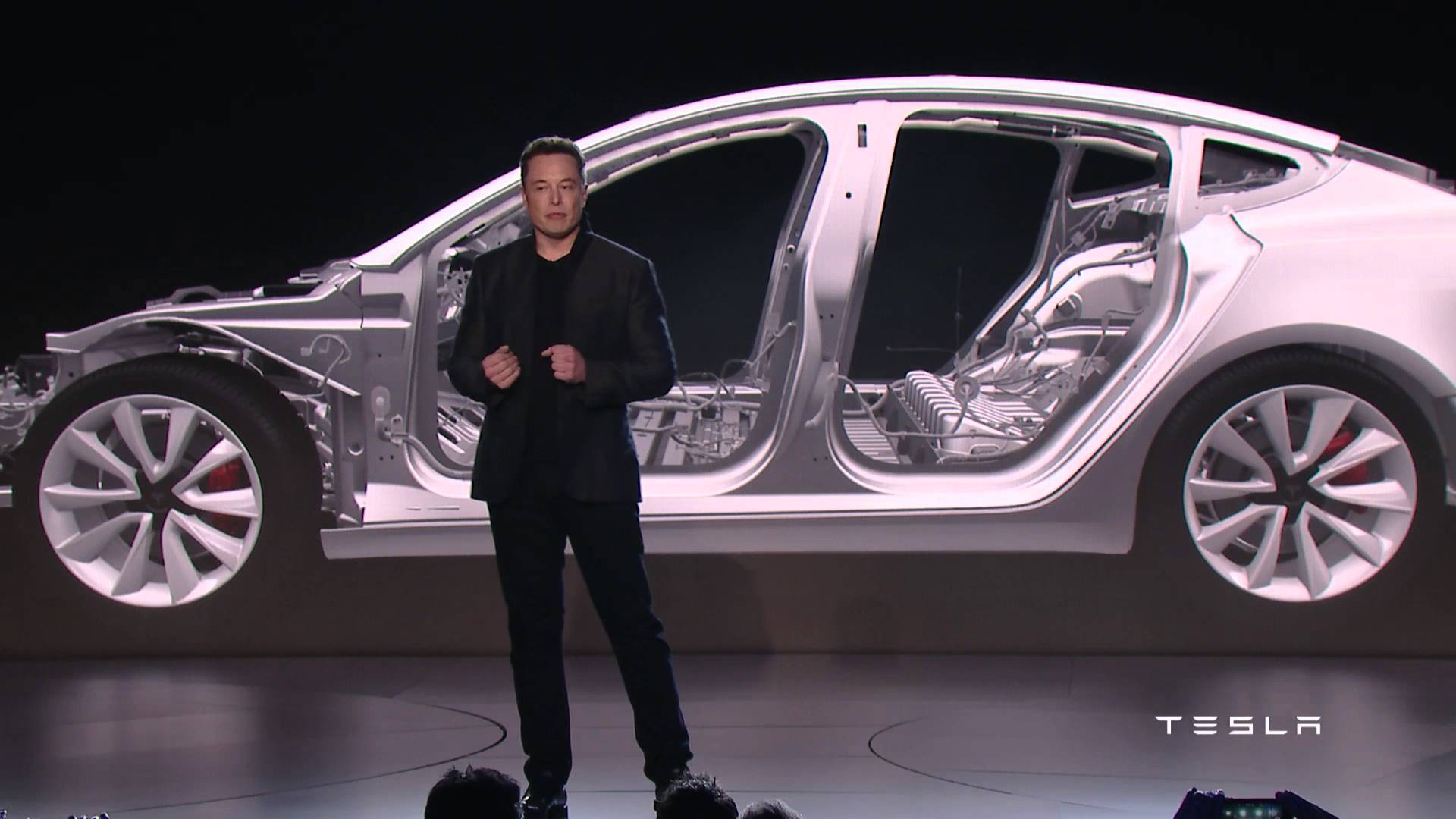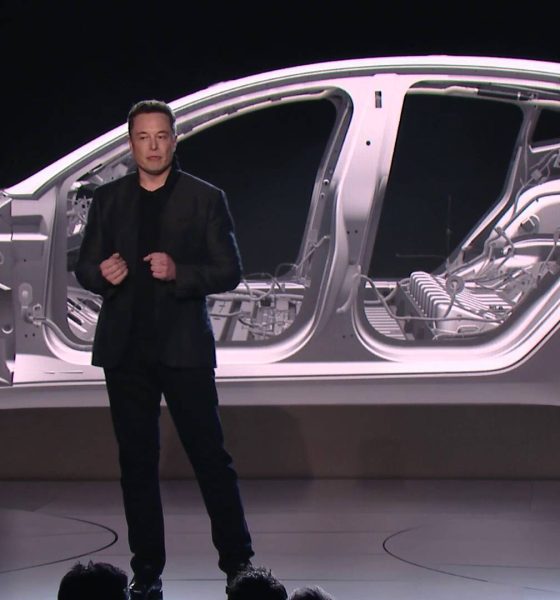

News
Tesla’s Elon Musk shares new insights on “funding secured” tweet as messages with Saudi PIF are revealed
Elon Musk recently shared some insights about his infamous 2018 “funding secured” tweet, which he posted when he announced his intentions to take Tesla private. The Tesla CEO’s recent comments came as text messages between Musk and the Saudi Arabia Public Investment Fund Head were shared online.
The text messages between Musk and the Saudi PIF Head Yasir Al-Rumayyan were revealed as part of a 300-page motion filed late last week by Alex Spiro, the Tesla CEO’s lead attorney. The messages were part of Musk’s deposition with the US Securities and Exchange Commission, which accused the CEO of securities fraud.
In August 2018, Musk announced on Twitter that he was looking to take Tesla private at $420 per share (pre-split) and that he had funding secured. A blog post published soon after explained that Musk’s reference to funding being secured came from previous talks with the Saudi PIF. Musk eventually walked away from the take-private deal, despite Tesla’s financial advisers coming up with a possible list of investors which included Silver Lake and Volkswagen AG.
A look at Musk’s texts to the Saudi PIF Head showed that the CEO was extremely adamant about the sovereign fund confirming that it had shown interest in helping Tesla become a private company. The initial messages shared by Musk’s attorney were calm enough, with the Saudi PIF head confirming that any Tesla venture in Saudi will be 100% owned by the EV maker with no strings attached.
The next messages, which seemed to follow a report which alleged that the Saudi PIF had no interest in helping Tesla go private, were more aggressive.
During his appearance at TED 2022, Musk noted that he has an obsession with the truth. This is something that was extremely evident in his texts with the Saudi PIF Head. Musk confronted Al-Rumayyan about the report, noting that “This is false.” The Saudi PIF Head confirmed Musk’s statement, noting that the report was “Not true” and that “Nobody talked to them (the media).” The Saudi PIF eventually issued a statement, but Musk was not happy with its content and tone.
“This is an extremely weak statement and does not reflect the conversation we had at Tesla,” Musk sternly wrote, also adding later on that the Saudi PIF was “throwing me under the bus.”
Al-Rumayyan’s attempts at placating the Tesla CEO were evident in later messages, with the PIF Head assuring Musk that he was a friend and thus must not be treated like an enemy. “The last thing I want to do is ‘throw you under the bus.’ I am your friend. So, please don’t treat me like an enemy,” the PIF Head wrote to Musk.
Despite the back and forth, however, Musk remained aggravated about the situation. Even after Al-Rumayyan shared another article, Musk noted that the piece was “weak sauce and makes me sound like a liar.” Musk then noted that “There will be no further communication unless you fix the public perception of wishy washy support and interest from the PIF.” Al-Rumayyan’s last messages to Musk shared in Spiro’s filing stated that the Saudi PIF would be working on a statement, a move that the Tesla CEO stated meant “a great deal.”
In recent Twitter posts, Musk shared some more insights on his “funding secured” tweet. According to Musk, and just as the CEO stated in his text messages from 2018, “the head of Saudi PIF committed unequivocally to take Tesla private with me, as witnessed by the Tesla CFO and several others. That is why I said funding was secured.” Musk also posted some fresh criticism of the SEC’s San Fransisco Office, which he described as “puppets” of Wall Street short seller sharks.
Don’t hesitate to contact us with news tips. Just send a message to simon@teslarati.com to give us a heads up.

News
Tesla FSD fleet is nearing 7 billion total miles, including 2.5 billion city miles
As can be seen on Tesla’s official FSD webpage, vehicles equipped with the system have now navigated over 6.99 billion miles.

Tesla’s Full Self-Driving (Supervised) fleet is closing in on almost 7 billion total miles driven, as per data posted by the company on its official FSD webpage.
These figures hint at the massive scale of data fueling Tesla’s rapid FSD improvements, which have been quite notable as of late.
FSD mileage milestones
As can be seen on Tesla’s official FSD webpage, vehicles equipped with the system have now navigated over 6.99 billion miles. Tesla owner and avid FSD tester Whole Mars Catalog also shared a screenshot indicating that from the nearly 7 billion miles traveled by the FSD fleet, more than 2.5 billion miles were driven inside cities.
City miles are particularly valuable for complex urban scenarios like unprotected turns, pedestrian interactions, and traffic lights. This is also the difference-maker for FSD, as only complex solutions, such as Waymo’s self-driving taxis, operate similarly on inner-city streets. And even then, incidents such as the San Francisco blackouts have proven challenging for sensor-rich vehicles like Waymos.
Tesla’s data edge
Tesla has a number of advantages in the autonomous vehicle sector, one of which is the size of its fleet and the number of vehicles training FSD on real-world roads. Tesla’s nearly 7 billion FSD miles then allow the company to roll out updates that make its vehicles behave like they are being driven by experienced drivers, even if they are operating on their own.
So notable are Tesla’s improvements to FSD that NVIDIA Director of Robotics Jim Fan, after experiencing FSD v14, noted that the system is the first AI that passes what he described as a “Physical Turing Test.”
“Despite knowing exactly how robot learning works, I still find it magical watching the steering wheel turn by itself. First it feels surreal, next it becomes routine. Then, like the smartphone, taking it away actively hurts. This is how humanity gets rewired and glued to god-like technologies,” Fan wrote in a post on X.
News
Tesla starts showing how FSD will change lives in Europe
Local officials tested the system on narrow country roads and were impressed by FSD’s smooth, human-like driving, with some calling the service a game-changer for everyday life in areas that are far from urban centers.

Tesla has launched Europe’s first public shuttle service using Full Self-Driving (Supervised) in the rural Eifelkreis Bitburg-Prüm region of Germany, demonstrating how the technology can restore independence and mobility for people who struggle with limited transport options.
Local officials tested the system on narrow country roads and were impressed by FSD’s smooth, human-like driving, with some calling the service a game-changer for everyday life in areas that are far from urban centers.
Officials see real impact on rural residents
Arzfeld Mayor Johannes Kuhl and District Administrator Andreas Kruppert personally tested the Tesla shuttle service. This allowed them to see just how well FSD navigated winding lanes and rural roads confidently. Kruppert said, “Autonomous driving sounds like science fiction to many, but we simply see here that it works totally well in rural regions too.” Kuhl, for his part, also noted that FSD “feels like a very experienced driver.”
The pilot complements the area’s “Citizen Bus” program, which provides on-demand rides for elderly residents who can no longer drive themselves. Tesla Europe shared a video of a demonstration of the service, highlighting how FSD gives people their freedom back, even in places where public transport is not as prevalent.
What the Ministry for Economic Affairs and Transport says
Rhineland-Palatinate’s Minister Daniela Schmitt supported the project, praising the collaboration that made this “first of its kind in Europe” possible. As per the ministry, the rural rollout for the service shows FSD’s potential beyond major cities, and it delivers tangible benefits like grocery runs, doctor visits, and social connections for isolated residents.
“Reliable and flexible mobility is especially vital in rural areas. With the launch of a shuttle service using self-driving vehicles (FSD supervised) by Tesla in the Eifelkreis Bitburg-Prüm, an innovative pilot project is now getting underway that complements local community bus services. It is the first project of its kind in Europe.
“The result is a real gain for rural mobility: greater accessibility, more flexibility and tangible benefits for everyday life. A strong signal for innovation, cooperation and future-oriented mobility beyond urban centers,” the ministry wrote in a LinkedIn post.
News
Tesla China quietly posts Robotaxi-related job listing
Tesla China is currently seeking a Low Voltage Electrical Engineer to work on circuit board design for the company’s autonomous vehicles.

Tesla has posted a new job listing in Shanghai explicitly tied to its Robotaxi program, fueling speculation that the company is preparing to launch its dedicated autonomous ride-hailing service in China.
As noted in the listing, Tesla China is currently seeking a Low Voltage Electrical Engineer to work on circuit board design for the company’s autonomous vehicles.
Robotaxi-specific role
The listing, which was shared on social media platform X by industry watcher @tslaming, suggested that Tesla China is looking to fill the role urgently. The job listing itself specifically mentions that the person hired for the role will be working on the Low Voltage Hardware team, which would design the circuit boards that would serve as the nervous system of the Robotaxi.
Key tasks for the role, as indicated in the job listing, include collaboration with PCB layout, firmware, mechanical, program management, and validation teams, among other responsibilities. The role is based in Shanghai.
China Robotaxi launch
China represents a massive potential market for robotaxis, with its dense urban centers and supportive policies in select cities. Tesla has limited permission to roll out FSD in the country, though despite this, its vehicles have been hailed as among the best in the market when it comes to autonomous features. So far, at least, it appears that China supports Tesla’s FSD and Robotaxi rollout.
This was hinted at in November, when Tesla brought the Cybercab to the 8th China International Import Expo (CIIE) in Shanghai, marking the first time that the autonomous two-seater was brought to the Asia-Pacific region. The vehicle, despite not having a release date in China, received a significant amount of interest among the event’s attendees.








